This daikon radish kimchi, made with gorgeous purple daikon radishes and vivid red Korean chile powder, is easy to make and a delicious fermented vegetable recipe that's packed with vibrant flavor. It's perfect served with grilled or roasted meats or spooned into a bowl of hot soup.
Like traditional cubed radish kimchi, made with Korean white radish, this recipe has a fiery flavor touched with the brightness of garlic, ginger, and green onion and is a perfect first-time recipe for home cooks that are new to fermentation.
Jump to Recipe | What is it? | What's in it? | Tips | Variations | Common Questions
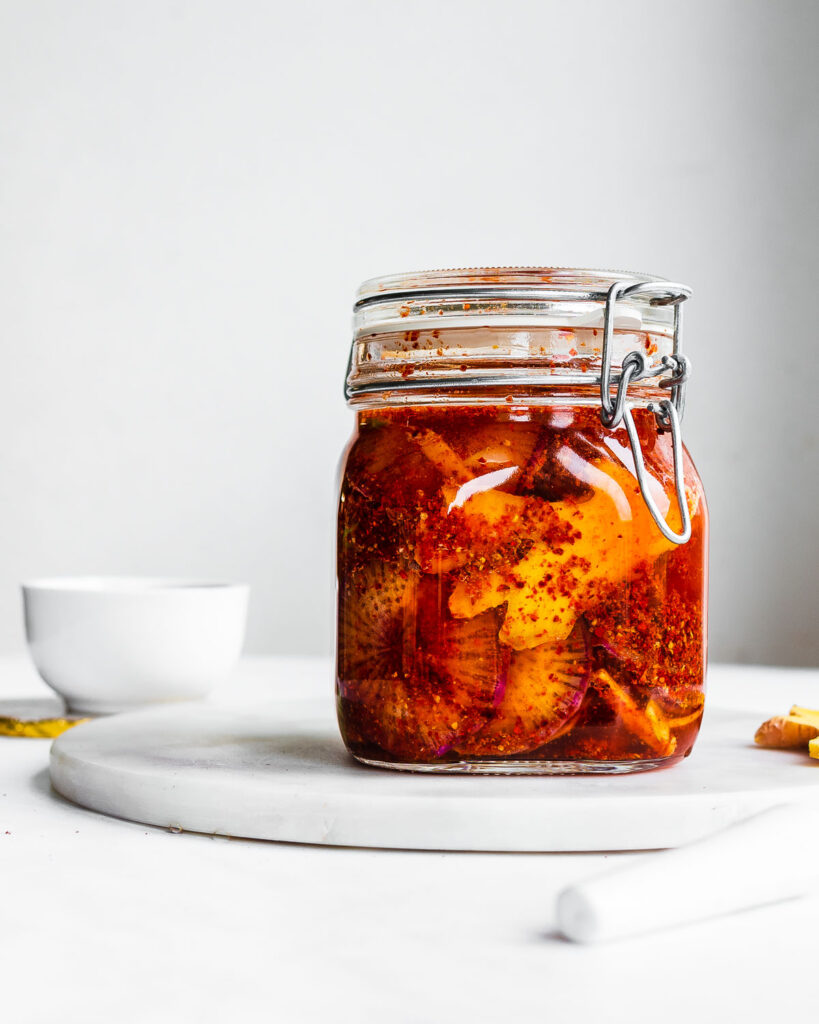
What is it?
Traditionally made in the fall when the white-fleshed, green-topped Korean radish comes into season, radish kimchi (kkakadugi) is a delicious fermented vegetable dish spiked with green onions, ginger, garlic, and chile powder. The name (kkakadugi) refers to the motion of cubing vegetables. In this version, instead of making traditional cubed radish kimchi, you'll slice them thinly. As a result, the radish tends to ferment a little faster.
Like kimchi made with cabbage, it also contains a wide variety of flavorings such as ginger, green onions, garlic, and Korean chile powder. Radish kimchi has a crunchy texture and delicate sweet note underscored by sourness and the heat of gochugaru (Korean chile powder). As with most fermented vegetables, it's an abundant source of beneficial bacteria.
What's in it?
Radish kimchi typically contains ingredients similar to kimchi made with cabbage. In addition to radish, most recipes use green onions, garlic, ginger, and a good dose of gochugaru (Korean chile powder) which gives the kimchi a rich heat that borders on smoky. In addition, you'll often find fish sauce or salted shrimp added to recipes. These ingredients give kimchi a rich, elusive savory quality.
- Radish. Traditional recipes typically use the stout, white-fleshed Korean radish which has a crisp texture and flavor similar to Daikon. I typically make my version with purple Daikon radish. Any radish will work in this recipe.
- Green onions and garlic give the dish a bright note that brings balance to the robust flavor of fermented foods.
- Ginger brings a fieriness that brightens the mellow flavor of radish and complements the heat of chile powder.
- Gochugaru is a Korean chile powder with a sweet-smoky flavor and a light, mellow heat that builds with time.
- Fish sauce gives the kimchi a pleasant, umami punch.
- Salt gives the kimchi flavor and keeps the vegetables crisp while also creating an environment that favors the proliferation of beneficial bacteria.
Fermentation Tips
Fermented vegetables are some of the simplest foods you can make. While it can feel intimidating to try your first sauerkraut recipe or make sour pickles for the first time, it's much easier than you think. Provided you use good-quality, fresh ingredients and keep your kitchen and equipment clean, you'll be able to ferment vegetables safely at home.
- Use the freshest ingredients you can find. Your radishes should be plump and firm. Green onions should be bright and crisp. Fermentation magnifies the quality of your ingredients.
- Keep your vegetables submerged in brine, because it helps prevent the formation of mold and other microbes that can contaminate your ferments. One of the best ways to do this is to use a glass weight in your jar. Alternatively, you can wedge a cabbage leaf over your vegetables as they ferment, keeping everything under the brine.
- Add additional brine to keep your vegetables submerged, if you need to. Radish kimchi is self-brining, meaning that the vegetables mix with salt and release their own liquid, which keeps them secure and safely fermenting below the brine. If, however, you do not have enough brine to cover them completely, top off the jar with a 2% brine made with salt and water.
- Seal the jar to prevent contamination by mold. When your fermenting foods are exposed to air, it increases the likelihood of mold formation. So seal the jar tightly. If you are not using a fermentation seal, burp your jar every day to release the carbon dioxide that develops during fermentation.
- Place your jar of kimchi into a bowl or on a plate while it ferments to prevent any leaks on your countertop.
Other spicy ferments you might like
Chilis and garlic are a great match for many fermented vegetables, and some of our favorites include fermented hot sauce and pepper mash alongside this easy jalapeno garlic sauerkraut.
Love this recipe? There's more.
Join Nourished Kitchen's Cooking Club for ad-free browsing, nourishing monthly meal plans, and access to all our premium downloads.
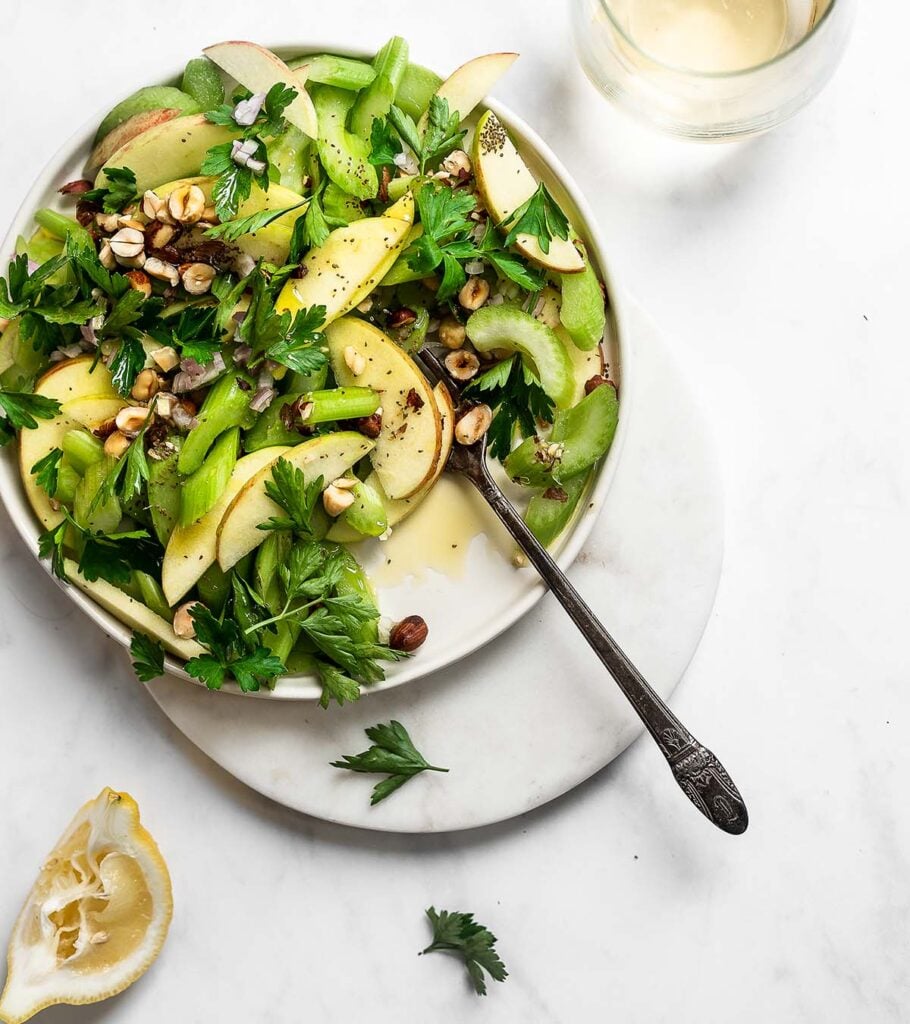
Variations
To make cubed radish kimchi, peel and cut the radish into ½-inch cubes instead of slicing it thin.
Use Korean radish (mu) rather than daikon radish. The Korean radish is firm, stout, and white touched with light green at its top. You can often find it at grocery stores specializing in Asian cuisine or at farmer's markets
Omit the fish sauce for a vegan version.
Add diced apple or Asian pear to the radish as it gives the kimchi a pleasant flavor and may speed up the fermentation process owing to its high sugar content.
Other fermented vegetable recipes you might like
Common Questions
Korean white radish cubes are traditionally used for kimchi. You can find white radish (mu) in some natural foods markets in the fall as well as in some grocery stores that specialize in Korean ingredients. This recipe calls for Daikon radish which makes a nice substitute.
Radish kimchi keeps about 3 months in the fridge.
Korean-style fermented vegetables, such as radish kimchi, are typically fermented only a few days before being transferred to cold storage.
During fermentation, beneficial bacteria metabolize carbohydrates and release carbon dioxide which builds up in your fermentation vessel, causing the kimchi to become bubbly. If you prefer non-fizzy kimchi, use a fermentation seal that allows the carbon dioxide to escape rather than building in the jar.
Store radish kimchi in a glass jar in the fridge for up to 3 months.
You can use it as a condiment or side dish. It's also delicious added to soups, wraps, or as an accompaniment to grilled and roasted meats?

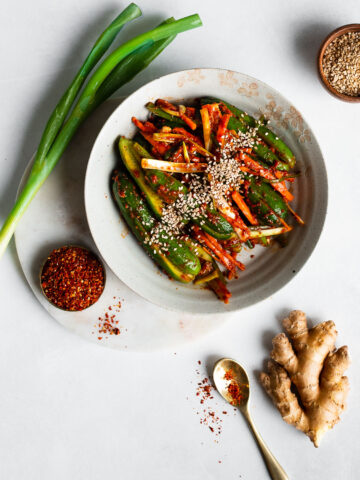
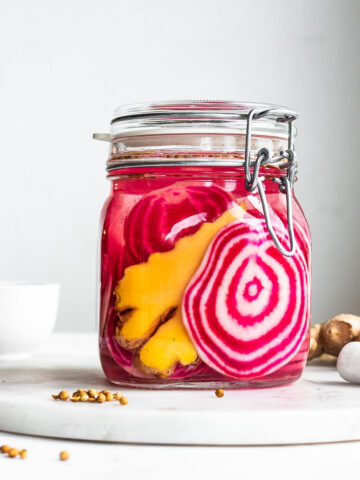
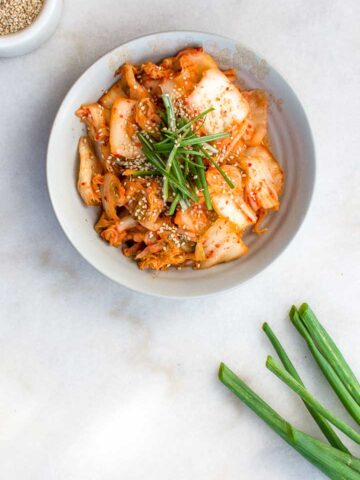
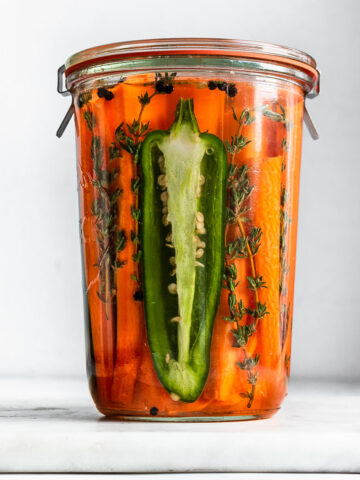
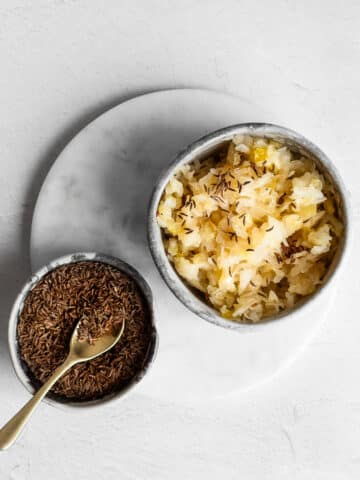
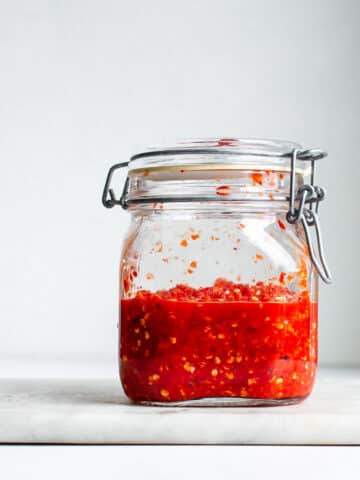
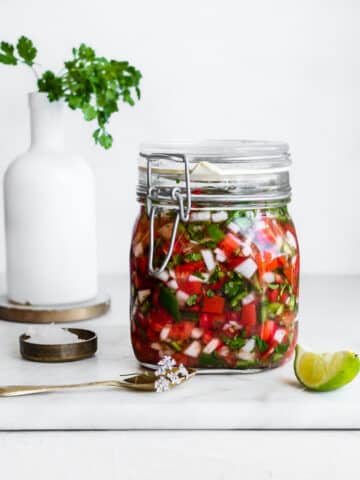
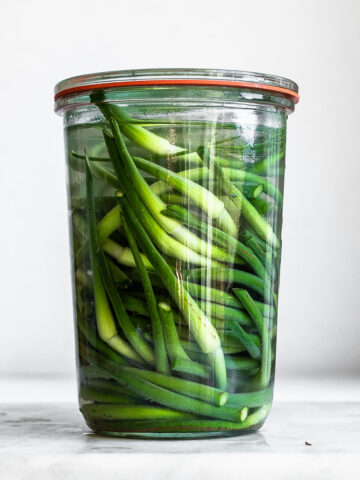
Brushjl says
I love kimchi and I really loved this. Thank you so much for the recipe. I just used it in a pickled vegetable grain bowl, yum!
Jessica says
My first time making kimchi and loved it. Next time I will cut the fish sauce by at least half. I love fish sauce, but there is a strong fishy aftertaste that's too strong for me. Planning to add carrots next time. Thanks for the great recipe.
Amber M says
I did this with cubed radish instead of with sliced radish, and cut the ginger in half because my family's not a huge fan. And we really liked it.